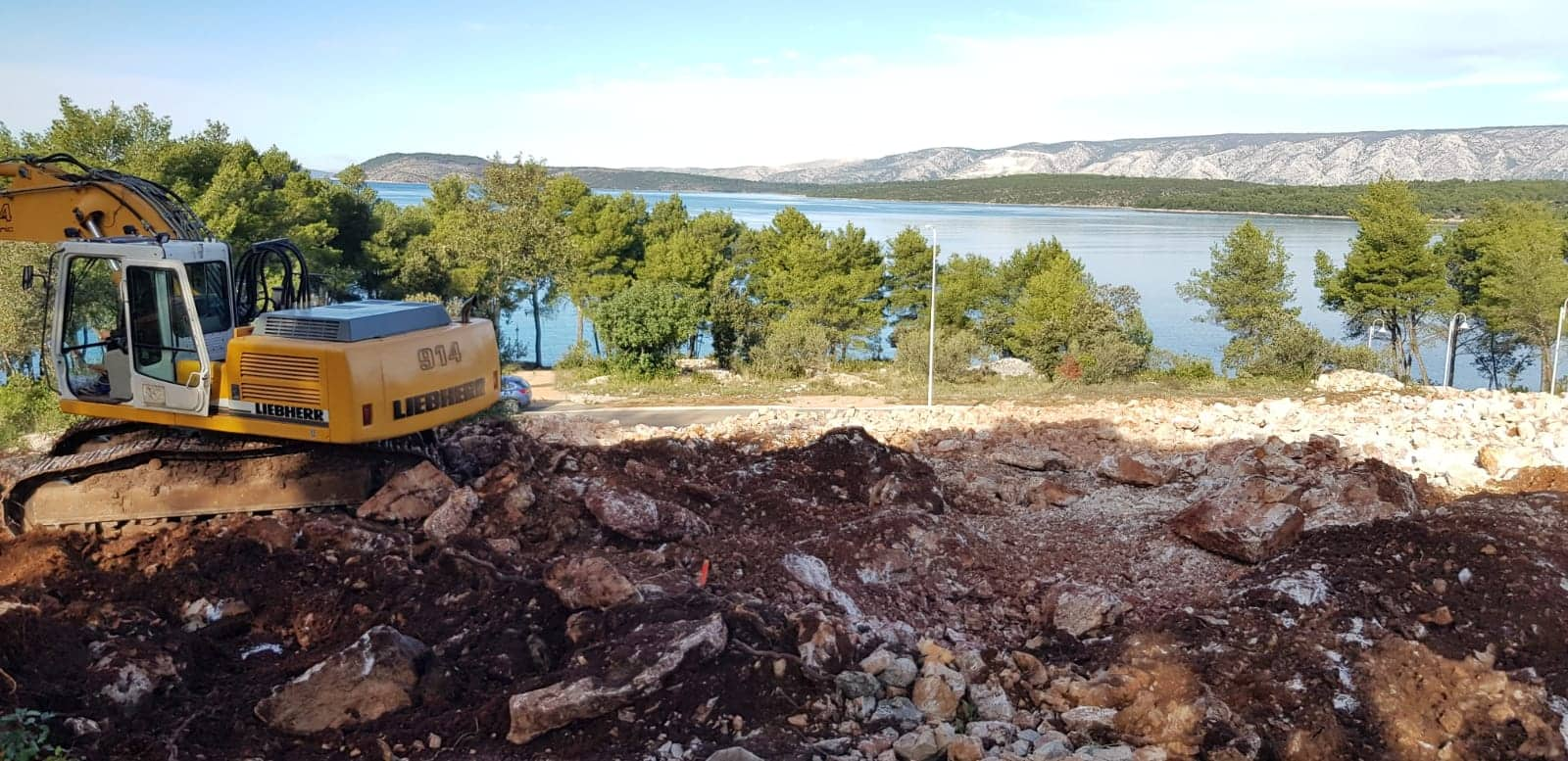Hvar's Search for Doctor Sees Nobody from Croatia Apply
Croatia's paradoxical society strikes again as a job posting for a doctor on the island of Hvar from a while ago goes unanswered by anyone from Croatia.
Croatia demographic crisis has left and continues to leave its very real and deeply concerning mark on the domestic labour force. Medics are among those heading off abroad in their droves in search of better wages, more job security, and a less politicised society in which to practice their chosen professions. While at the same time, some of the healthcare offered here in Croatia is among the best, with some of the best professionals on standby to do an excellent job.
The old saying about just not being able to get the staff even stretches to the most academic of positions, it seems.
One job posting from the island of Hvar in particular, in search of a doctor, should have turned the heads of many. The offer showed that the position comes with handsome pay, excellent bonuses and an apartment all thrown in, and on the stunning island of Hvar, of all places. It could be a lot worse, right? It appears that not even this much bait is enough to catch most fish, at least not fish from Croatia.
As Poslovni Dnevnik writes on the 20th of January, 2019, the advertisement for a doctor in Sućuraj on Hvar has been live for around half a year, in which in addition to good wages and a free apartment, a huge bonus of 50,000 kuna per year is offered, as HRT reports.
As yet, not one person from the Republic of Croatia has applied for the position, and the only interested person is a doctor from Macedonia.
The policlinic in Sućuraj on the island of Hvar currently lies empty. There are no patients because there are no doctors, just one nurse. Sadly, this isn't her first time having to work without a doctor in her 37 years of service.
Stay up to date with our dedicated lifestyle page for much more. If it's just Hvar you're interest in, give Total Hvar a follow.
Europe's Oldest Public Theatre Set to Reopen on Hvar
December 31, 2018 - Built in 1612 and closed since 2004, the oldest public theatre in Europe is set to reopen on Hvar.
Some great news for Hvar Town in this very historic year for one of Croatia's top destination, as it has been announced that one of its top cultural treasure the oldest public theatre in Europe - is set to reopen after 15 years.
Hvar Town has already been celebrating a special 150th birthday in 2018 as its status as the birthplace of organised tourism in Europe. Back on May 15, 1868, the Hvar Health Society opened its doors, a society which is credited as the oldest organised tourism in Europe.
It is not the only oldest thing in Europe that the town boasts, however. Way back in 1612, the oldest public theatre in all Europe opened its doors on the main square of Hvar Town, a sign of the rich cultural heritage of an island which has more UNESCO heritage than any other island in the world.
Located on the first floor of the Arsenal building which guards the entrance to Dalmatia's largest square, the theatre has been sadly closed since 2004 due to the need for urgent renovations. This included the 400th anniversary of the theatre back in 2012.
The newly-revamped theatre should be open for its first performance in May 2019, and there will also be a space for art exhibitions as well. An excellent addition to the cultural offer of the town.
The theatre has recently been opened up to the public for viewing on selected dates. Popular Hvar blog Go Hvar not only popped in to see what all the fuss was about, but also wrote an excellent and very detailed blog about the theatre, including a ton of great pictures and PDFs. Check out the Go Hvar blog on Europe's oldest public theatre.
For more information about the island of Hvar, follow the dedicated TCN portal.
Property of the Week: Spacious Town House on Hvar
December 31, 2018 - A final property of the week to see out 2018, and a journey to the gorgeous island of Hvar.
Another year comes to an end, and there is plenty to look forward to in 2019. Will buying property in Croatia be on your list? We leave you with the final property of the week, courtesy of our friends at Trgostan:
A beautiful newer house of 90 sqm, on two floors, consisted of an open plan area (kitchen, dining and living area) and a bathroom on the ground floor, with three bedrooms and a bathroom on the 1st floor, recently built, with a spacious (70 sqm) intimate courtyard, in the town center on the north-west side of the island, close to the sea.
For more information, and to book a viewing, visit the Trgostan website.
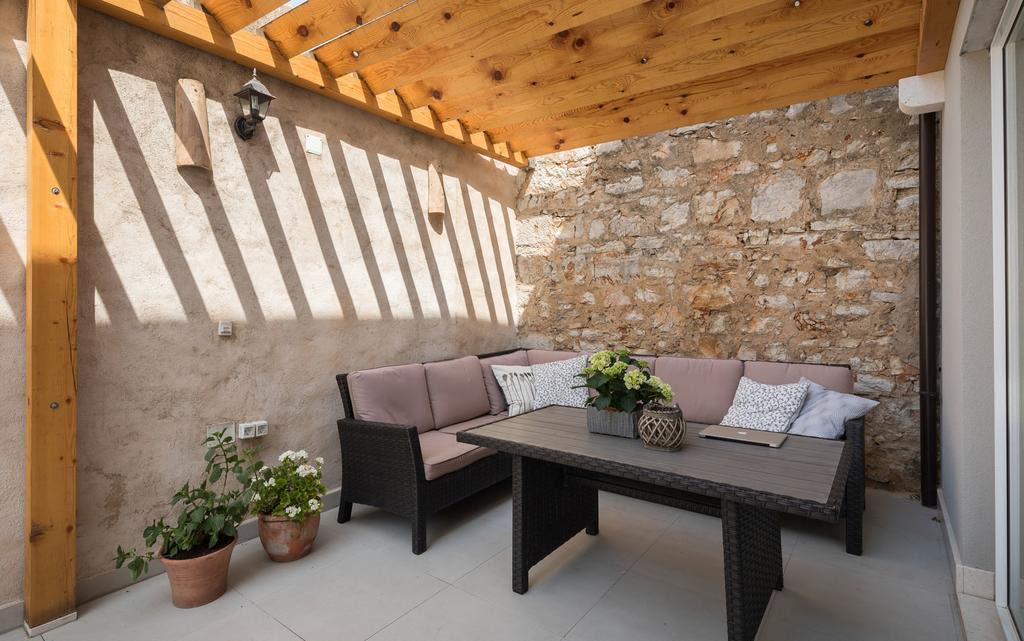

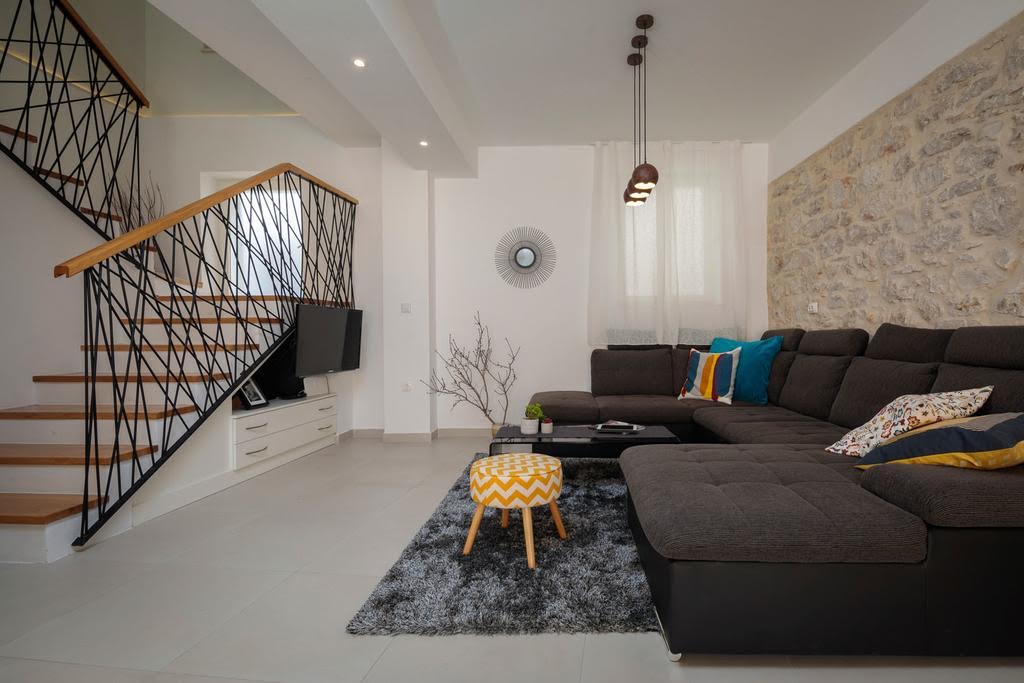
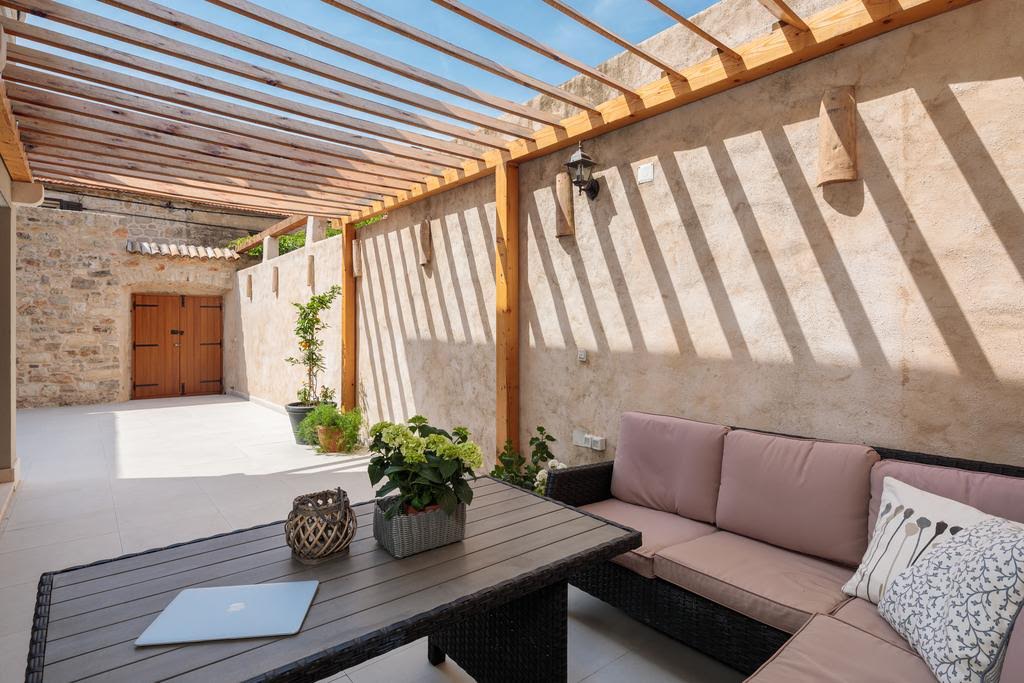
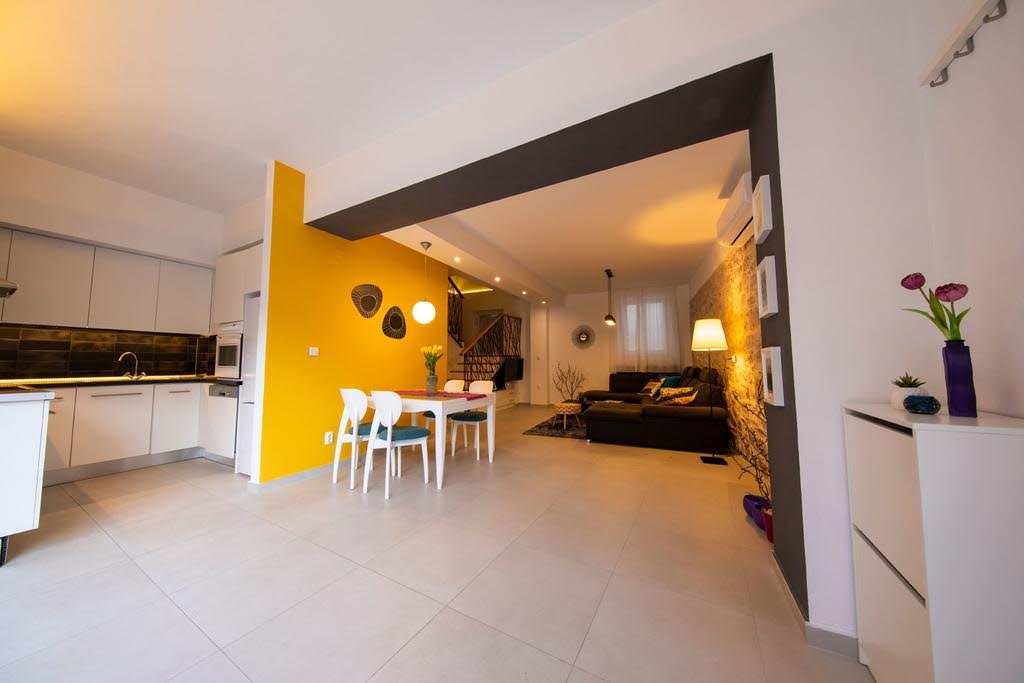

Hvar Star Residence: Project Update from Zoran Pejovic
December 14, 2018 - TCN caught up with Zoran Pejovic, the person in charge of the Hvar Star Residence hotel project in Maslinica Bay, Stari Grad.
A major project on the island of Hvar has received a building permit! While this would not ordinarily be news in most countries, things are a little different in Croatia. Especially, for some reason, on Hvar, which is an island with bureaucracy to match its beauty. Zoran Pejovic, the Hotel Development Director, gave us an update on progress.
What is the current situation at the Hvar Star Residence hotel project in Stari Grad?
We are underway. I am tempted to say we are finally underway, because getting to this point was not an easy ride. However, when I look at some other projects, I must say that I am very happy to be in the stage that we are at now. You have to keep in mind that this is a greenfield investment and that a lot of preparatory works had to be accomplished before even being able to apply for the building permit. We received our building permit two weeks ago, and officially opened the construction site on December 12, 2018. We are very happy to have Radnik from Križevci, one of the most respected construction companies in Croatia, with experience in building high-end hotels and resorts as our main contractor.
Also, the entire team working on the project is sincerely dedicated to ensuring this becomes a flagship project in all our careers. The owners, the Truchi family, are also heavily involved, and their inputs have been shaping the project from the very beginning. This is a very personal project for them as well, as they have fallen in love with the site in Stari Grad. And not only with the site really but with the Island of Hvar and Split and the entire Dalmatia. I dare say that this is their signature investment, which they regard more as a family legacy than a typical financial investment. All this being said, we are really just now at the beginning of a long journey.
Tell us a little more about the project
The project is quite complex, and it has gotten more complex as we got along the way. The first phase of the project will consist of the main hotel building with 50 keys, with the main hotel restaurant, wine bar, wine & concierge club and two gorgeous pools, three hotel annexes which will add three more keys to the rental pool, each with four or five bedrooms, a separate spa and wellness building with its well balanced offering of treatment rooms, aqua thermal experiences, fitness center and a beauty salon, and beach bar, that will offer more casual dining. And that is not all, because we will also be developing a plot nearby into a vegetable garden applying the standards of organic farming. More elements are to come, but I think this gives an indication of the direction in which we are heading.
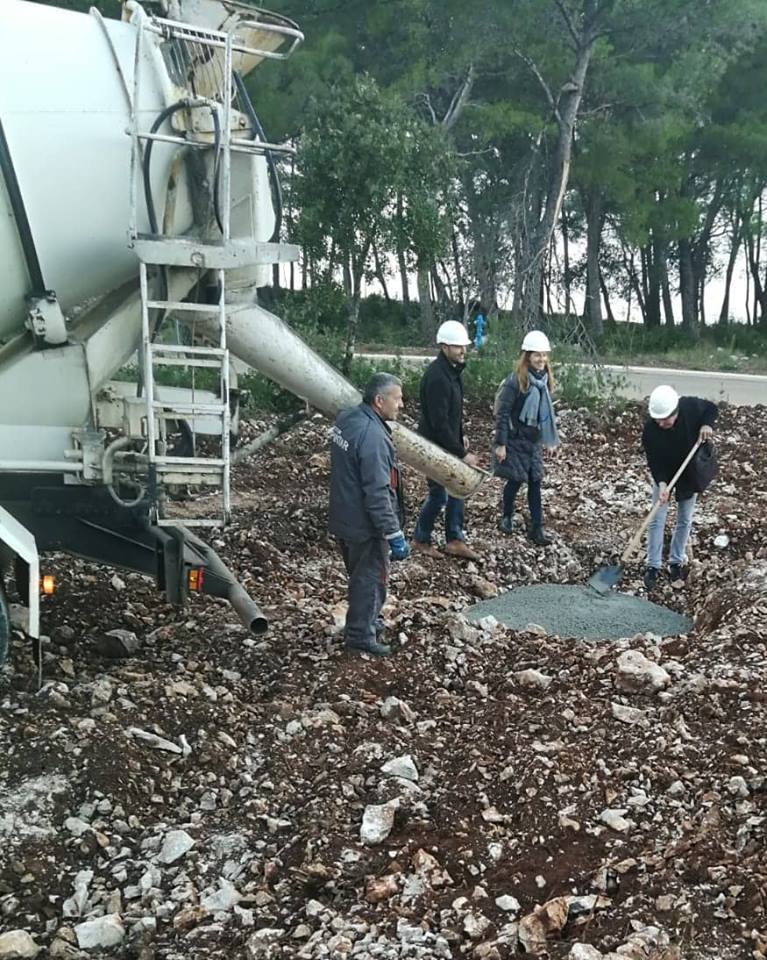
You come from a background of luxury tourism. Tell us about the vision of hospitality with the project.
Sustainable and experiential would be the two driving ideas behind this project. I have already mentioned our plans for the organic garden. Besides that, we will have all organic linen, will not use single-use plastic and we are developing our own organic cosmetics line among other things. Being sustainable is not only about the impact on nature, but also on culture. We want to build on the existing heritage of the Hvar island, which is immense and create legacy for the future, mainly by supporting local producers, be it winemakers, olive oil producers, lavender producers or anyone else ready to partake in the process of creation of unique experiences for the guests. We want to take our guests on a transformational journey of experiencing these continually developing and unique Hvar traditions and practices.
How do you see the future of tourism in general, and the future of tourism in Dalmatia and especially Stari Grad?
Tourism has many faces. It is a huge industry that is growing faster than the world’s overall economy. The number of people who can afford to travel is going to double by 2030, estimates suggest. It is hard to imagine anything stopping this trend other than some cataclysmic events. Reasons for this growth are numerous, from the obvious economic ones to the subtler psychological ones. Travel is one of the emotional industries, and it will grow. While the future will certainly be defined by technology, the future for humans will be nevertheless more emotional than technological. This might sound paradoxical, but I am sure of this. We have already enough evidence in the current narrative which is to a point religionizing the travel industry.
On the receiving end of this tide of tourism are the most beautiful places in the world, which we by chance got to occupy as well. Some are unhappy on how it has been unfolding over the years, citing the deurbanization of the traditional city centers, pollution and rapid changes that come with it. There are some truths to this, but changes are happening mainly due to technology, pollution is something that can be dealt with by raising the awareness and the deurbanization is not an irreversible process. More often than not people that have sold old houses in the city centers have made for themselves more comfortable living than before. This is not a tirade in defense of all things that come with tourism, but a small reminder that the only people who can reverse these negative trends are us, people who are living here. And we can do that by promoting excellence, supporting small producers and raising the bar when it comes to experiential and transformational forms of travel and tourism. That is the new luxury.
In Dalmatia, we have seen all of these faces of tourism, and we have seen different reactions. Most of the people are waiting for someone to come up with the set of rules and bar this and prohibit that, romanticizing about days gone by and being just the passive observers to these processes. Yet, this is not the case everywhere. In Stari Grad we are seeing an increasing interest in the development of high-end hospitality establishments. Besides our project, there is much more publicized Four Seasons project as well as Valamar hotel in the place of Helios hotels. I am sure more will come with time. The local authorities with Mayor Škarpa have shown great interest in pursuing these type of projects, that are both culturally and naturally conscious and take into account local dynamics and heritage.
For clarification, Hvar Star Residence is the company name of the hotel project, and the final name of the project will be announced shortly.
For the latest updates from Hvar Star Residence and other news from the island, visit the dedicated TCN portal for Hvar.
A Singular Trip To Croatia Offers A Few Tourism Lessons
November 22, 2018 — The Croatian tourism apparatus will now endure its annual post-summer evaluation.
Statistics must be dissected: How many arrivals? How much was spent?
The service industry exchanges anecdotes en masse: Which nation sent the most visitors? Who were the biggest spenders?
Reviews and ratings on travel sites such as TripAdvisor and Booking.com are combed for helpful feedback — or dismissed as pointless ramblings.
Yet rarely does one get an intimate look into the experience of a Croatian tourist from beginning to end. Until now.
Refinery29’s Away Game, a series which chronicles millennial women’s travels and expenses, chronicled a 32-year-old life insurance underwriter’s day trip to Croatia.
The unnamed traveler matches a coveted demographic within the Croatian tourism industry: an American millennial from the suburbs of Washington DC earning upper-middle-class wages.
The resulting travel diary and/or expense report offers a rare look into the experience of a first-time visitor to Croatia — warts and all.
The piece offers a holistic picture of the Croatian tourism experience: A reasonable traveler guided by word of mouth and not jingoistic advertising campaigns can experience unanticipated delights and exceeded expectations.
Croatia’s Infrastructure: The Dalmatian Sardine Can
Throughout the diary, a theme emerges: Croatia’s crowded. Especially during the height of the tourism season. It spills over into infrastructure headaches.
Immediately on her second day, our unnamed tourist encounters the infamous crowding at Dubrovnik’s Pile Gate, a familiar scene for locals and repeat visitors alike. The traveler must let two busses pass before she finally finding room to hop aboard.
Later during her stay, a warning about four cruise ships depositing its crowds onto Dubrovnik sends her hightailing to Montenegro. She spends close to $150 just to escape for a day, trading the “Pearl of the Adriatic” for an daylong jaunt through Perast, Kotor and Budva.
The hordes make cameos again in her travelogue, in Split, Hvar, Plitvice and later in Zagreb.
This sense of overcrowding reemerges in her jaunts from one location to the other. Her trip from Dubrovnik to Split took nearly six hours because of congestion on the highways. Ditto a bus trip from Zagreb to Plitvice, also extended by crowded roadways.
It was all enough to culminate in a catch-all warning to potential visitors:
“Be prepared, in high tourist season it’s very expensive and crazy-crowded on the Croatian coast,” she writes at the end. “If you’re going to Dubrovnik, pay attention to the cruise schedule and try to avoid the days where there are lots of ships.”
Croatian Service: Delightfully Bespoke
The writer often valorizes locals going beyond a yeoman's effort to please visitors.
For example: during a trip to the Pakleni Islands, she raves of fresh sea urchin “that our guide plucked from the ocean and pried open right in front of us.”
The pattern repeats itself over and over: an Airbnb host in Hvar takes pains to handle logistics; a hotel restaurant in Split makes an off-the-menu pašticada on a whim; a solo tour goes from worrisome encounter to a delightful friendship.
Along the way, the author learns about the life of a local dependent on tourism: “They work 24/7 during the tourist season and it sounds incredibly stressful, but you’d never know.”
Is Croatia Expensive?
As the travel diary continues, a picture emerges of a conscious, selectively frugal spender. Our unnamed narrator carries her own collapsable water bottle; keeps snacks on hand; and chows on hotel breakfasts whenever possible.
“I am not a fan of hostels or shared accommodations, am willing to pay for good location, and the hotel stays included breakfast so this is where I spent the most,” she writes.
This precise spending reveals itself in her trinket and souvenir expenditures: magnets galore, as well as lavender soaps. But also something more authentic, preferably local. In Dubrovnik, she shelled out extra for filigree earrings and rose moisturizer.
“The earrings and rose cream are very touristy purchases,” she admits, then adds, “but are also so typical of Dubrovnik that they are perfect reminders of my trip.”
She’s also a cost-conscious eater. At no point during her trip does a meal come close to the triple-digit range. Granted, a solo traveler must either splurge on a Michelin Star meal or pig out in excess to cross the $100 threshold in Croatia. She often expresses disbelief at sums on her bills.
Her first meal in Zagreb sets the tone. After people-watching (another cheap-yet-fun experience) on Britanski Trg, she eats at Heritage, a tiny joint specializing in Croatian cuisine which emphasizes the food's local origins.
The bill offers a delightful sticker shock. “When I finish I’m stuffed, and when I get the bill and figure out the cost in USD I’m shocked how much I got for so little.” She paid $9.
Compare that to the $30-plus meals she regularly eats in Dubrovnik and Split.
Price disparities pop up in a myriad other ways. A cab from the airport to the hotel in Zagreb is $30; the same trip cost her $17 with Uber. (Not surprise anymore.)
All told, the traveler spent $4,603.74 in total. That includes airfare, travel, meals, souvenires and accommodations. That’s about $230 per day — days which included trips to neighboring Montenegro and Slovenia.
So... Has Croatia become too expensive?
Avoiding Well-Worn Paths
The tourism industry in Croatia often feels almost obsessed with online ratings and website recommendations. Yet our traveler’s piece limits her tech-guidance and dependency to three main apps: Airbnb, Uber and Viator.
The rest of her decisions are largely based on serendipity and word-of-mouth — either from locals or fellow travelers. It leads her to unexpected places you won’t find in many brochures or promotional videos.
While in Split, she visits Froggyland.
Froggyland?
Yes, Froggyland, “a weird little tourist trap of a museum, but worth the visit and entrance fee,” she writes. “It houses the largest collection of taxidermied frogs, all posed in dioramas performing different activities.
“It was bizarre, but I kind of loved it.”
She takes a small group tour of the Pakleni Islands run by a husband-wife duo which owns and operates “Amazing Hvar”.
The traveler then goes zip-lining in Omiš. It ends up being one of her favorite and most-dissected parts of her trip, with paragraphs-long descriptions. (Plitvice, by comparison, gets a few cursory and well-worn sentences about natural beauty.)
The tail end of her stay in Zagreb inadvertently coincides with an international street performance festival called “Cest Is D’best”, which provides a fallback diversion on quieter days. She also takes a Secret Zagreb tour, which explores the lesser-seen parts of the city.
Yes, there are obvious overtures to Croatia’s natural beauties and pitstops at all the usual hotspots; Dubrovnik’s city walls, Diocletian's palace and Plitvice all make an appearance.
Yet it’s the strokes of logistical luck which pepper her travelogue with unique and rewarding experiences.
The Intangibles
So what can one learn from this singular, yet instructive experience?
A few choice lessons:
There’s a difference between a traveller and a tourist: Many attempts to guide tourists’ gazes can often backfire, or at least distract people from what they set out to experience. The piece’s author seemed most keen on understanding where the locals ate, hung out and found cool. Some restaurant or dish suggested by a local became a must.
People want to understand and experience the lives of locals and fellow travelers. The traveler in this story seemed willing to assimilate, for however little she visited. She even shelled out $55 for a Croatian language audio course.
“It was surprisingly easy to learn enough to speak conversationally and ask directions,” she wrote (she's in the minority). “But I rarely actually needed to since most people I cam in contact with spoke perfect English.”
There are too many Game of Thrones tours: "I’m going on a Game of Thrones walking tour and am supposed to look for my guide in the square outside the gate holding a GoT flag," she writes, "which isn’t super helpful because there are at least 3 of them.”
Perhaps Croatia’s entire tourism industry can collectively take a few notes.
To read more about tourism in Croatia, check out TCN’s dedicated page.
British Master of Wine Jo Ahearne Exports to Japan from Hvar
November 20, 2018 - Jo Ahearne is the first Master of Wine to make wine in Croatia, and now her indigenous Hvar wines are en route to Japan.
I don't even dare ask how she did it.
Croatian bureaucracy has featured a lot on TCN in recent weeks, as we have been highlighting some of the absurdities of life here, as well as issues foreigners are experiencing trying to get residence permits. But every once in a while, there is a heartwarming tale of success against all the odds, and this one is really worth celebrating.
I first met Jo Ahearne MW 4-5 years ago at the Dalmacija Wine Expo trade fair, as we ended up sitting on the back row of Sasa Spiranec's excellent masterclass of the 2011 Plavac Mali vintage. Soon after, Jo Ahearne made the pioneering decision to move to the island of Hvar to make wines from the various indigenous grapes of the island, kicking off with a delightful rose from the Darnekusa grape, Rosina.

And while it didn't take Ahearne long to become noticed in the world of wine in Croatia, scoring 93/100 with her first ever Posip, and having her Wild Skins included in the best ten wines in Croatia last year, the more fascinating story for me was how she managed to navigate the bureaucracy and wine world in rural Croatia, and still succeed.
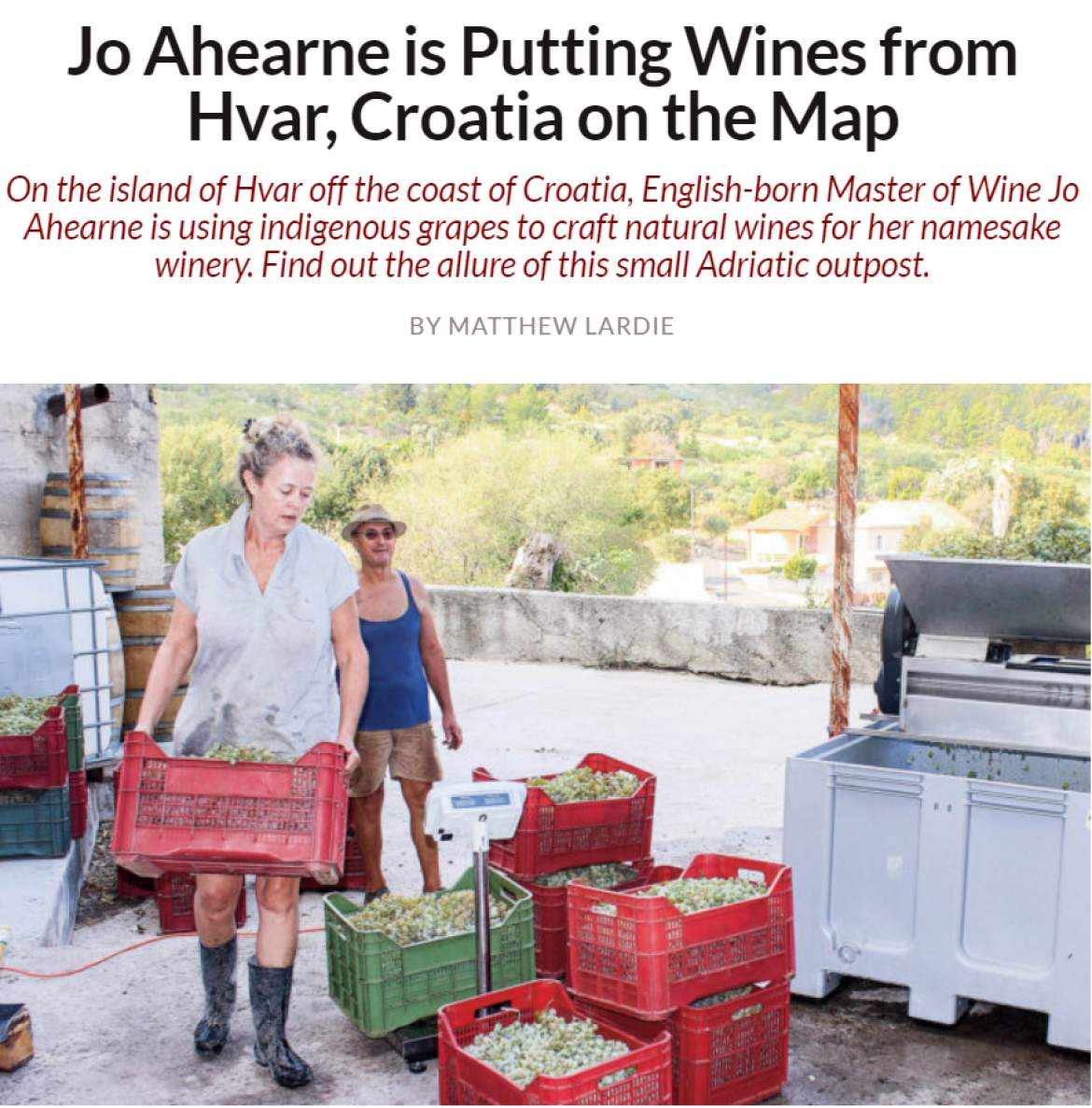
It was a brave move indeed to move to a country with not a word of the language and head to live on an island, and not even one of the main centres of population. All that would have been manageable, without the additional joys of Croatian paperwork, from permits to say to getting the right labels. Many is the time over the last few years that Jo and I have swapped frustrations over the crazy bureaucracy here over a beer. But while others gave up, Jo Ahearne kept on going strong. I truly hope she starts a wine blog about her adventures here - it would make fascinating and very entertaining reading. For all the problems, Jo has come across helpful officials on her journey who have helped enormously.

Getting the wine into the bottle is one huge milestone, getting it to the market yet one more, but actually managing to negotiate the paperwork for export to Japan (she is shipping Rosina, Plavac and Wild Skins) from her tiny Hvar winery in the village of Vrisnik is a phenomenal achievement, perhaps one that can only be fully appreciated by residents of the madhouse we know as The Beautiful Croatia. In addition to Australia next, exports to USA, Belgium, Germany, Slavonia, Serbia and UK will follow in early 2019.
Congratulations, Jo, very impressive on so many levels. And I do encourage you to check out Ahearne Wines and the sale and tasting options at Ahearne Vino on Hvar - a fantastic experience. You can follow Jo Ahearne's wine adventure in Croatia on the Ahearne Vino Facebook page.
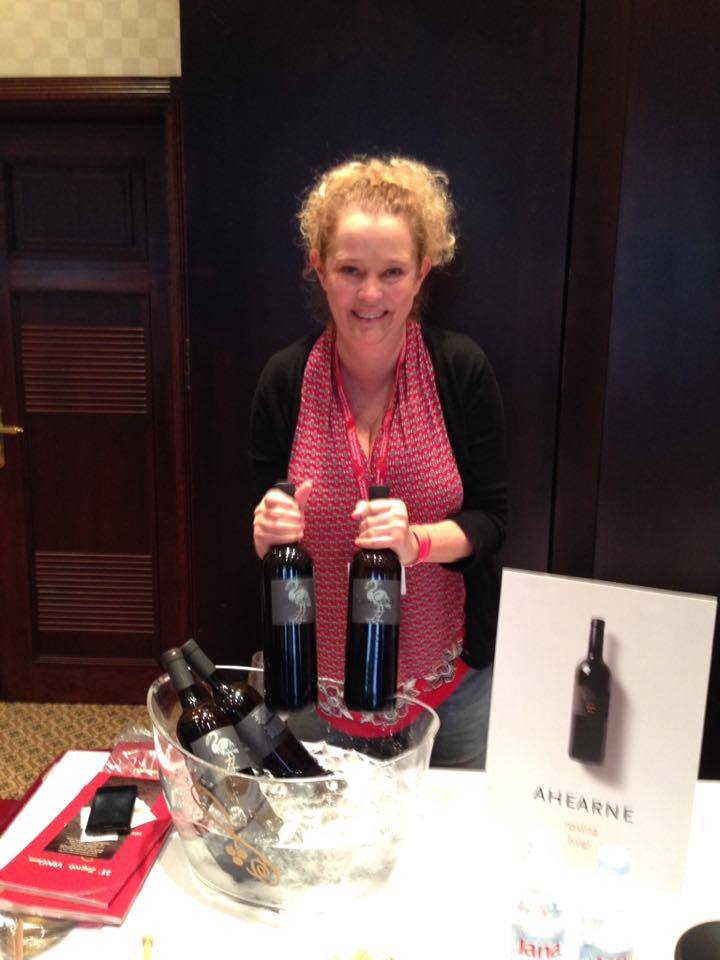
The Mediterranean as It Still is: Hvar Catamaran Goat Travel
November 14, 2018 - A little goat transport action on yesterday's catamaran from Split to Jelsa on Hvar.
Shortly after I moved to Hvar back in 2003, I was on the bus home from the ferry, driving though Vrbanj. Suddenly, the bus, which had been screaming through the village at quite a pace when suddenly the driver slammed on his brakes, reversed back and jumped out.
For at the side of the road was a man selling looked like half a dead pig. A negotiation was done, several kilos of meat cut and wrapped before the driver realised he did not have enough money and so borrowed the passenger fares to pay for it.
It will remain one of my favourite island moments. While some see Hvar as a premier elite island full of superyachts and A-list celebs, there is another, more natural side of life on the island.
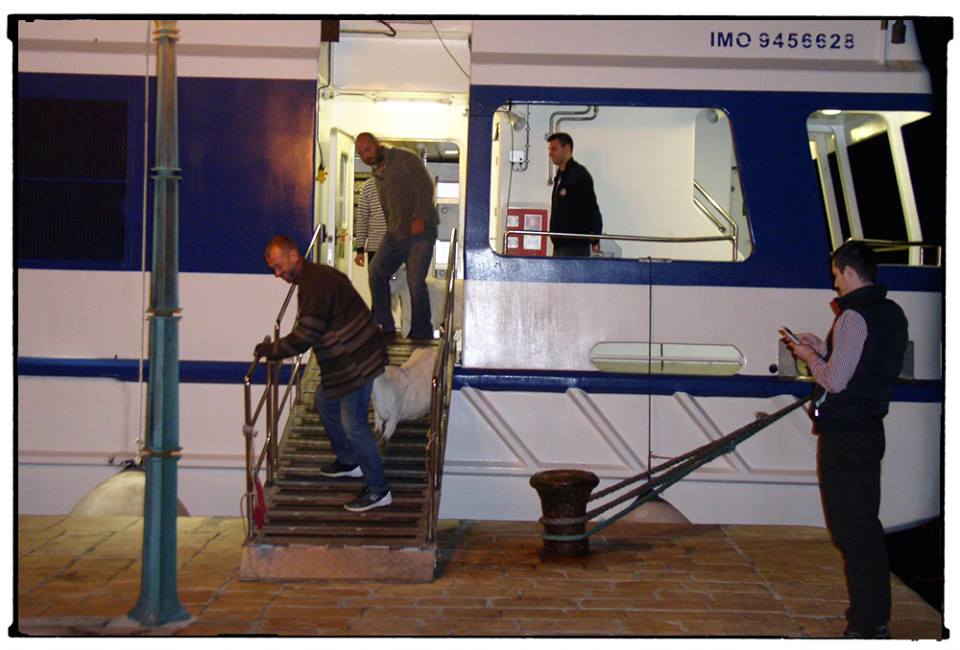
The view on Hvar last night as the evening catamaran from Split to Jelsa (with thanks to Dalmacijaland for the great find) - the culture of goat travel by catamaran seems to be alive and well now that the main tourist season has finished.
This goat travel is particularly timely for me. Having spent several hours recently putting together the definitive guide on how to get from Split to Hvar, I really thought I had every angle covered. Can you smoke on the catamaran or ferry, what is the policy of bringing pets on boats to Hvar, and even some advice on the rules for transporting Christmas trees, but there is clearly a gap of information regarding goat travel, an omission I shall address immediately. I am not an expert in goat travel, but I suspect if you are planning on bringing your pet goat to Hvar the next time you travel, it might be wise to check in advance, unless you know someone on the crew of course.
For all other options of how to get from Split to Hvar, click here.
Valamar One Step Closer to Investing in Stari Grad Hotels on Hvar
November 11. 2018 - The road has been long and complicated, but Valamar seems to be one step closer to its plan of transforming Stari Grad's ailing hotels into a 4-star paradise.
An important milestone for the future of the hotels of Stari Grad on Hvar this week, as the Zagreb Stock Exchange reported on Valamar Hotels announcement that the court has accepted the bankruptcy plan of the Helios hotel group submitted by Valamar and PBZ. Speaking to sources familiar with the discussions, it seems that the high trade court is expected to ratify this decision early next year, after which Valamar can move forward with its plans to completely redevelop Stari Grad's hotels which are located in prime positions in the historic island town.
If Valamar does succeed with its plans, it will be a major boost for Stari Grad, which is slowly emergy as a high-quality destination with a focus on quality not party. Mayor Antonio Skarpa recently prohibited the opening of any more hostels in Stari Grad, and the Valamar 4-star hotels would be one of three great additions to the town's hospitality scene, should they all come to fruition.
On the other side of the bay, close to the main ferry terminal, construction on the luxury Olive Bay Resort, a residential complex with two boutique five-star hotels, has already commenced, while the 140 million euro Brizenica Bay resort, complete with the Four Seasons brand, is seemingly making a little progress, with an agreement on the access road finally signed. Should all three projects come to fruition, and with Stari Grad's intention to avoid being branded as a party destination, the future of luxury tourism on Hvar may move more from Hvar Town to central Hvar
For the latest news and features from Stari Grad and the island of Hvar, follow Total Hvar.
Summer Who? Winter Swimming Season Opens on Hvar (VIDEO)
November 10, 2018 - While some might be thinking of snow and Christmas, meanwhile on the sunny island of Hvar - the opening of the winter swimming season!
It is the island once known as the Austrian Madeira, the birthplace of organised tourism in Europe exactly 150 years ago this year, and an island known for having the most sunshine in Europe.
With some of Europe's pristine waters, why wouldn't you go for a swim on Hvar in November?
Especially if you found yourself in the company of one of the island's most enthusiastic winter groups - the Polarni Tovari - or Polar Donkeys.
Formed a couple of years ago, the Polar Donkeys are keen to embrace the joys of swimming on Hvar in the winter months.
In recent years, they have organised a swim at Bonj les Bain in front of Hotel Amfora on New Year's Day, and several brave souls (and pets) have braced themselves for the first swim of the year.
That tradition will no doubt continue, but the Polar Donkeys have also announced this afternoon that the 2018 winter swimming season on Hvar has begun! Check out the video below.
To follow the latest from the sunshine island, click here.
Safe Croatia: Sherlock Holmes Visits Hvar, Birthplace of Fingerprinting
November 9, 2018 - A man from Hvar, Ivan Vucetic, was the first to solve a crime using fingerprinting. Sherlock Holmes comes to visit Croatia's premier island. A nice branding op for Croatia as a safe destination?
I have found myself visiting a lot of conferences in the last couple of months, with one theme coming up a lot - branding. How should Croatia be branding itself? One of the key strengths Croatia has during these brainstorming sessions is how safe it is. In a world gone mad, here is a country in Europe which is very accessible and offers endless coastline and beaches, as well as a rich cultural and gourmet offer. And it is very safe.
Soon after I moved to Hvar, I remember reading in a regional news portal about the theft of a few litres of olive oil in some village on Hvar. Major crime indeed, and worthy of big news headlines...
For the first ten years on Hvar, I don't think I ever locked the front door of my house, and I was not alone - it is just a really safe place to be.
The perception of 'safe Croatia' came up once more this week at the outstanding Crikvenica International Health Tourism conference organised by the Kvarner Health Cluster. A fascinating small pilot survey of Chinese perceptions of Croatia as a medical tourism destination compared to Japan, South Korea, Germany and USA had the one stand-out finding - the perception of the safety of Croatia among respondents. Read more about the research by Professor Christine A. Lai from the State University of New York Buffalo State.
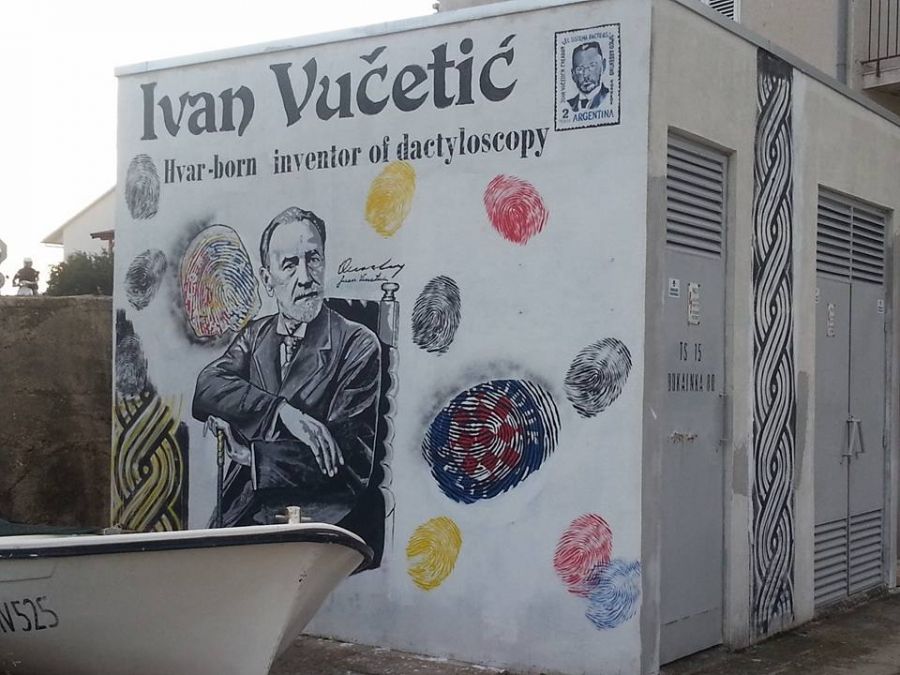
One of the great promotional things about Croatia that should get a little more attention, at least in my opinion, is the achievements of this Hvar-born man, Ivan Vucetic. While an increasing number of people know that Nikola Tesla was born in what is Croatia today, Croatia gave Croatia the tie, the parachute and the pen, not so many know that it was a Croat in Argentina who is known as the father of dactyloscopy - here he is above, on a mural on the entrance to Hvar Town. To learn more about Ivan Vucetic and his big discovery in this, the 160th year since his birth, click here.
And then when you find out that the Master Sleuth himself, Me Sherlock Holmes, recently visited Hvar, the idea of the branding of safe Croatia takes hold a little more. Benedict Cumberbatch is a very fine actor with a very distinctive voice, but how did he do trying to pronounce 'Hvar'?

